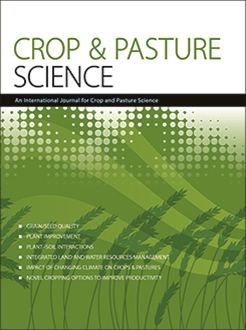Perennial ryegrass (Lolium perenne L.) is a widely sown pasture species in temperate regions. Under heat and moisture-deficit stress, its production is suppressed and tiller mortality increases, particularly when plants are simultaneously exposed to other stresses such as intense defoliation. We investigated the effects of extended grazing exclusion periods in spring and summer on herbage and soils of rotationally grazed, perennial ryegrass-dominant pastures at a summer-wet site and a summer-dry site in sheep and beef hill country in New Zealand. Treatments comprised ‘grazed’ (conventional rotational grazing), ‘early opening’ (grazing exclusion from mid-spring to mid-summer to allow perennial ryegrass to flower), and ‘deferred grazing’ (grazing exclusion from mid-spring to late summer to allow perennial ryegrass to flower and set seed). At both sites, deferred grazing increased perennial ryegrass tiller density and total vegetation cover, and reduced the abundance of broadleaf species and Pseudopithomyces chartarum spores for up to 15 months after exclusion compared with the grazed control. Herbage production was reduced during the deferred period but there was a growth surge thereafter so that herbage production over the study period was similar in the deferred and grazed treatments. Pasture nutritive values were lower in the deferred than the grazed treatment during the exclusion period but were similar in all treatments by the end of the following winter. In the autumn after deferring, seedlings contributed ∼50% of the perennial ryegrass tillers present at the summer-dry site but only ∼10% at the summer-wet site, where regrowth tillering of existing plants contributed a high proportion of the perennial ryegrass tillers present. Overall, early opening had few effects on the pasture, whereas deferred grazing had numerous positive effects on the pasture but only short-term effects on soil quality.
How to translate text using browser tools
15 October 2021
Grazing strategies for resilience of ryegrass (Lolium perenne) dominant pastures in hill country
Katherine Tozer,
Karin Müller,
Anthony Craven,
Catherine Cameron
ACCESS THE FULL ARTICLE
<
Previous Article
|

Crop and Pasture Science
Vol. 72 • No. 11
November 2021
Vol. 72 • No. 11
November 2021
deferred grazing
grazing management
hill country grazing
pasture resilience
perennial ryegrass
soil quality
tiller production





